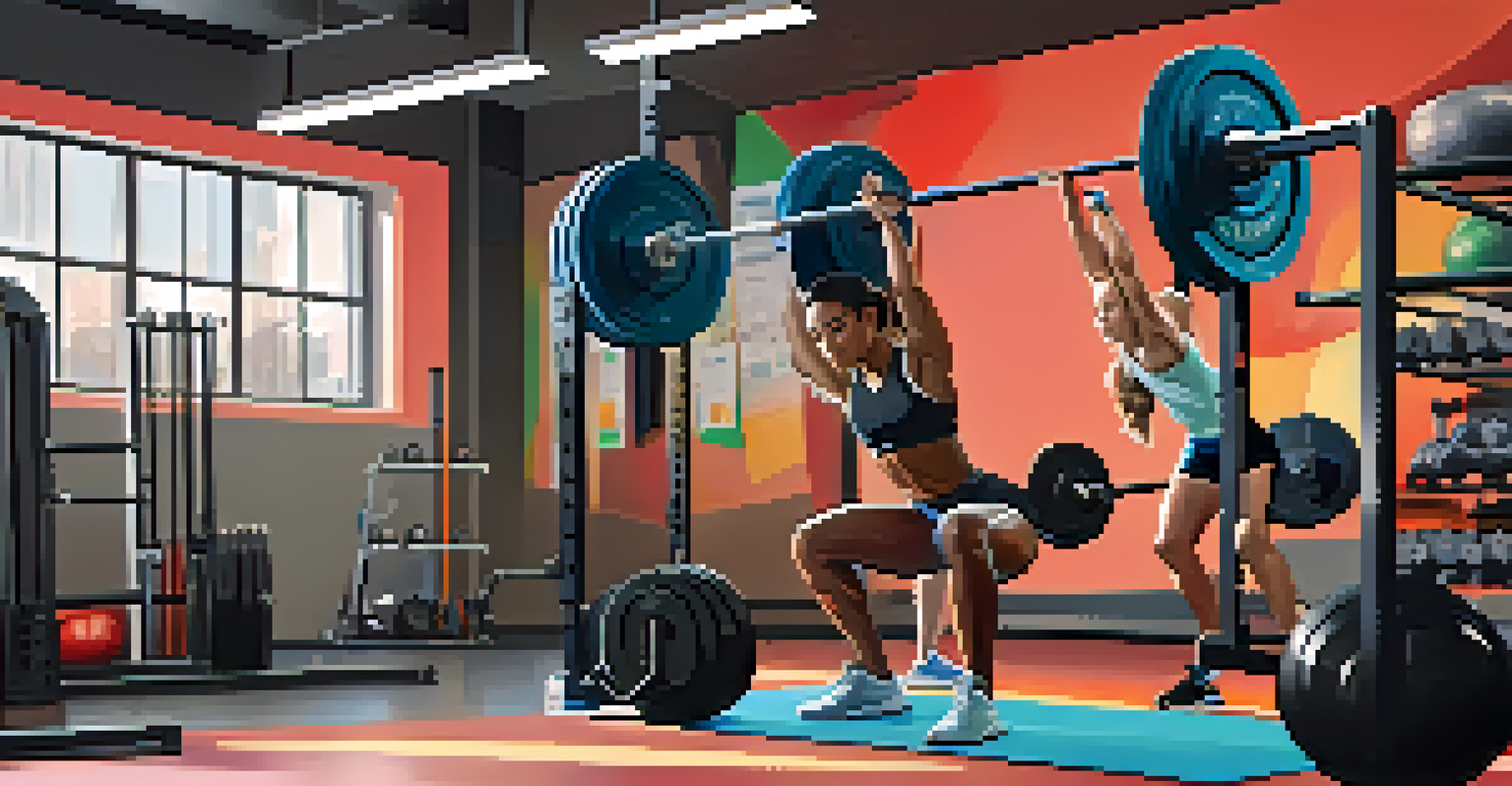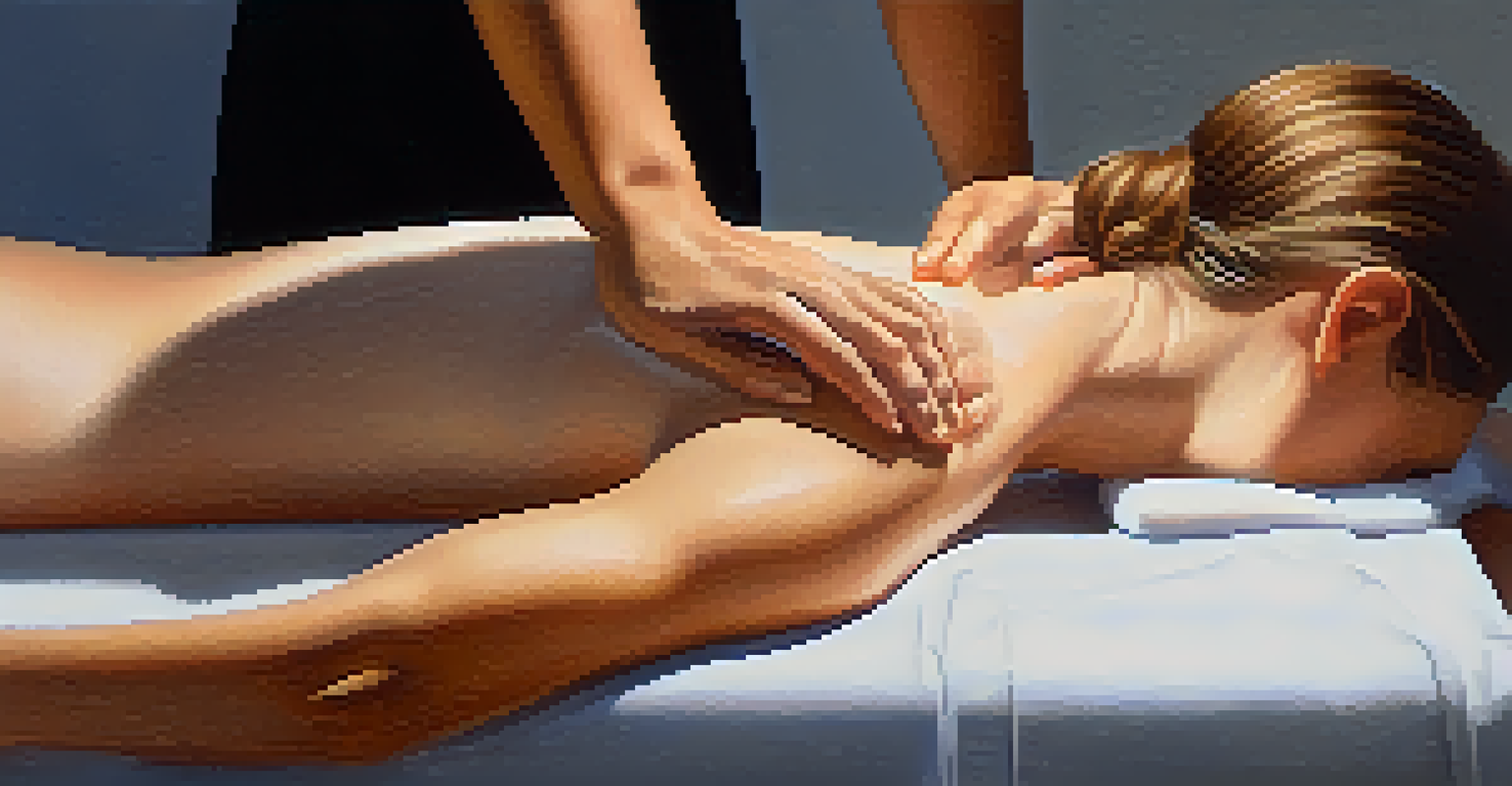The Role of Physical Therapy in Sports Medicine Recovery

Understanding Sports Medicine and Its Importance
Sports medicine is a specialized field that focuses on preventing, diagnosing, and treating sports-related injuries. This area of healthcare is crucial for athletes of all levels, from weekend warriors to professional competitors. By addressing injuries and promoting recovery, sports medicine enhances athletic performance and overall well-being.
The greatest glory in living lies not in never falling, but in rising every time we fall.
The importance of sports medicine extends beyond just recovery; it also emphasizes injury prevention. This proactive approach helps athletes maintain peak performance while minimizing the risk of future injuries. By integrating physical therapy into this framework, athletes can benefit from tailored rehabilitation programs designed to meet their specific needs.
In essence, sports medicine plays a vital role in an athlete's journey, ensuring they not only recover but also thrive in their sport. This holistic approach encompasses various practices, with physical therapy being a key player in the recovery process.
What Is Physical Therapy?
Physical therapy is a healthcare profession that utilizes various techniques to improve mobility, reduce pain, and restore function. Therapists employ exercises, manual therapy, and modalities like heat or ice to help patients recover from injuries. The goal is to enhance the patient's quality of life, making it an essential component of sports medicine.

In the context of sports medicine, physical therapy is tailored to address specific athletic injuries. This could range from sprains to more complex conditions like torn ligaments. By focusing on rehabilitation, physical therapists help athletes regain strength and flexibility, enabling a safe return to their sport.
Sports Medicine Enhances Performance
Sports medicine focuses on preventing and treating injuries, helping athletes maintain peak performance and overall well-being.
Moreover, physical therapy is not just about recovery; it also empowers athletes with knowledge on injury prevention strategies. This education can be invaluable in helping athletes maintain their physical health and avoid future setbacks.
How Physical Therapy Aids Recovery
Physical therapy aids recovery by providing a structured rehabilitation plan. After an injury, therapists assess the athlete's condition and develop a personalized program that addresses their specific needs. This customized approach ensures that the recovery process is both effective and efficient.
It is not the strongest of the species that survive, nor the most intelligent, but the one most responsive to change.
Therapists use a combination of exercises and techniques to improve strength, flexibility, and coordination. For instance, an athlete recovering from a knee injury may engage in targeted exercises that focus on rebuilding muscle strength around the joint. This targeted approach accelerates healing and helps athletes return to their sport sooner.
Additionally, physical therapy includes education on proper body mechanics and techniques to avoid re-injury. By understanding how to move safely and effectively, athletes can enhance their performance while reducing the likelihood of future injuries.
The Role of Manual Therapy in Rehabilitation
Manual therapy is a hands-on technique that physical therapists use to assess and treat musculoskeletal pain and dysfunction. This method involves manipulating soft tissues and joints to alleviate pain, improve circulation, and enhance mobility. For athletes, this can be particularly beneficial in addressing tightness and restrictions that may hinder performance.
Incorporating manual therapy into rehabilitation can lead to faster recovery times. By targeting specific areas of discomfort, therapists can help relieve pain and restore function more effectively than exercise alone. This hands-on approach often complements other therapeutic modalities, creating a comprehensive recovery strategy.
Physical Therapy Supports Recovery
Physical therapy provides tailored rehabilitation programs that aid in recovery, improve mobility, and empower athletes with injury prevention strategies.
Moreover, manual therapy fosters a deeper connection between the therapist and the athlete. This relationship allows for ongoing assessment and adjustments to the treatment plan, ensuring that the athlete receives the best possible care throughout their recovery journey.
Importance of Strength and Conditioning
Strength and conditioning are critical components of physical therapy in sports medicine recovery. After an injury, rebuilding strength is vital to ensure the athlete can perform at their best. This process often involves a systematic approach that gradually increases the intensity of exercises to match the athlete's recovery progress.
Conditioning goes hand in hand with strength training, focusing on improving overall fitness levels. This may include cardiovascular training, flexibility exercises, and sport-specific drills. By enhancing overall conditioning, athletes not only recover more effectively but also improve their performance on the field or court.
Ultimately, a well-rounded strength and conditioning program helps athletes regain confidence in their physical abilities. This confidence is crucial when returning to competitive play, as it allows them to perform without fear of re-injury.
The Psychological Aspect of Recovery
Recovery from a sports injury is not just a physical journey; it's also a psychological one. Athletes often face mental challenges during their rehabilitation, including fear of re-injury and frustration with their progress. Physical therapists play a vital role in addressing these psychological aspects by providing support and encouragement throughout the process.
Therapists can help athletes set realistic goals and celebrate small victories along the way. This positive reinforcement fosters a growth mindset, allowing athletes to remain motivated and focused on their recovery. Moreover, open communication about their feelings and concerns can alleviate anxiety and promote a healthier mindset.
Collaboration Ensures Comprehensive Care
A multidisciplinary approach among healthcare professionals maximizes recovery success by tailoring treatment plans to each athlete's unique needs.
By addressing both the physical and psychological challenges of recovery, physical therapists empower athletes to regain not just their physical strength, but also their mental resilience. This holistic approach is essential for ensuring successful return to sport and performance.
Collaboration Between Healthcare Professionals
Effective recovery in sports medicine often requires collaboration between various healthcare professionals, including doctors, physical therapists, and athletic trainers. This multidisciplinary approach ensures that the athlete receives comprehensive care tailored to their unique needs. Each professional brings their expertise to the table, creating a cohesive treatment plan.
For instance, a physician may diagnose an injury and recommend a course of treatment, while a physical therapist implements the rehabilitation plan. Athletic trainers often play a crucial role in monitoring the athlete's condition during practice and competitions. This collaborative effort maximizes the chances of successful recovery and minimizes the risk of re-injury.

Moreover, regular communication among the healthcare team is essential for adjusting the treatment plan as the athlete progresses. This ensures that everyone is on the same page, allowing for timely interventions and support throughout the recovery journey.